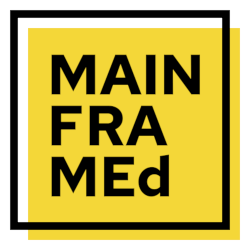CICS Command Level Programming
Code: CICSCLPBeen everywhere and found nothing…
Do you need a Custom Course or Solution?
Description
This course teaches CICS command level programming on CICS version 6.1. This course is also available at previous releases, please ask for details.
Audience
- IBM CICS COBOL Programmers.
- Batch COBOL Programmers moving into an IBM CICS environment.
Prerequisites
Attendees should ideally have some experience of COBOL programming in a Batch
environment.
Objectives
Upon completion, attendees will be able to:
- Confidently code Command Level CICS Programs
- Understand how to use File Control, Temporary Storage and Transient Data
- Describe how to use time dependent commands, and how to link between programs
- Understand how to deal with error conditions
- Use CEDA to define their program to CICS and to use CEDF to test and debug their programs
- The CICS/DB2 and CICS/MQ communication interfaces are covered
An Introduction to CICS Web Services is included. Basic Mapping Support is included for 3270 screen design. The attendees will have access to a CICS/TS 6.1 System and will write a Command Level program, updating it to handle recovery and code a BMS map.
Topics
DAY 1
Introduction to CICS Programming
- Basic CICS Terminology and Functionality
- Command level Syntax
- CICS and COBOL considerations
- CICS Translator and Co-Processing
Exception Conditions and access to System Information
- How to deal with Exceptional Conditions
- The Handle Condition Command
- The Ignore Condition Command
- RESP/RESP2
- The Exec Interface Block
- The Address Command
- The Assign Command
Terminal Control Commands
- The Receive Command
- The Send Command
- The Issue Print Command
- The Issue Disconnect Command
- Dealing with Function keys
- DFHAID
- EIBAID
- The Handle Aid Command
- Screen Attributes
- DFHBMSCA
Basic Mapping Support
- How to code a map
- DFHMSD
- DFHMDI
- DFHMDF
- Symbolic Map
- Screen Handling
- The Receive Map Command
- The Send Map Command
- The Send Text Command
- The Send Control Command
- Printing
DAY 2
File Control Commands
- The Read Command
- The Write Command
- The Rewrite Command
- The Delete Command
- The Unlock Command
- The Startbr Command
- The Readnext Command
- The Readprev Command
- The Resetbr Command
- The Endbr Command
- CICS and VSAM and RLS
- Recoverable Resources
- Record Locking
Control Operations
Interval Control
- Time Dependant Operations
- The Start Command
- The Retrieve Command
- The Delay Command
- The Cancel Command
- The Asktime Command
- The Formattime Command
Task Control
- The Suspend Command
- The Enq Command
- The Deq Command
Program Control
- Conversational vs Pseudo Conversation
- Passing Data – Commarea, Channels/Containers
- Hierarchical Processing
- The Link Co• Conversational vs Pseudo Conversation
- Passing Data – Commarea, Channels/Containers
- Hierarchical Processing
- The Link Command
- The XCTL Command
- The Return Control
- The Load Command
- The Release Command
- What are Channels and Containers
- How to request a Channel
- How to Get and Put data to a Containermmand
- The XCTL Command
- The Return Control
- The Load Command
- The Release Command
Temporary Storage Control
- What is Temporary Storage?
- The Writeq TS Command
- The Readq TS Command
- The Deleteq TS Command
Transient Data Control
- What is Transient Data?
- Remote Printing
- Automatic Transaction Initiation
- External Logging/CICSlog
- The Writeq TD Command
- The Readq TD Command
- The Deleteq TD Command
Journal Control
- What is Journalling?
- The Write Journalnum Command
- The Wait Journalnum Command
Storage Control
- Dynamic Storage
- The Getmain Command
- The Freemain Command
Defining Applications to CICS
- What are CICS Resources
- Resource Definition Online
- DFHCSD
- CEDA
- CEDB
- CEDC
- Defining Transaction/Programs/Mapsets/Files
- Batch utility DFHCSDUP
DAY 3
Workshop: Building a Map and a Command Level Application
CICS Application Transactions
- CICS Execution Diagnostic Facility – CEDF
- How to test and debug using CEDF
- View Working Storage
- Change Commands and set Breakpoints
- CICS Enhanced Command Interpreter – CECI
- Syntax check any Command level Command
- Execute any Command level Command online
DAY 4
Abnormal Termination and Recovery
- Why Transactions Abend
- Dynamic Transaction Backout
- Emergency Restart
- What is available for recovery
- The Handle Abend Command
- The Abend Command
- The Enter Tracenum Command
- The Dump Transaction Command
- What is a Logical Unit of Work
- The Syncpoint command
- The Syncpoint Rollback Command
Workshop: Testing the Application and Using Recovery
DAY 5
CICS/DB2 Interface
- The Attachment Facility
- The DSNC Transaction
- Connection threads
- How DB2 is defined to CICS
- Entry Threads
- Program and Package preparation
- Bind
Introduction to CICS Intersystem Communication
- Understanding a CICSPlex
- Why have it – Service Level Agreements
- Terminal Owning Region – TOR
- Application Owning Region – AOR
- File Owning Region – FOR
- MultiRegion Option – MRO
- Intersystem Communication
- IPIC using TCP/IP
- Transaction Routing
- Function Shipping
- Asynchronous Processing
- Distributed Program Link
- CICSPLEX System manager
- CMAS
- Distributing Transactions across the CICSPlex
Price (ex. VAT)
Duration
Schedule
- virtual
- 09-02-2026 - 13-02-2026
- register
Delivery methods
- Classroom
- On-site (at your location)
- Virtual (instructor online)
